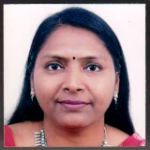 Currently a Professor in the Department of Ancient Indian History and Culture, University of Calcutta, Susmita Basu Majumdar’s specializations are Epigraphy and Numismatics. She also is deeply interested in Cultural history, Religious history and History of Medicine and Surgery. She is also well conversant with ancient languages like Sanskrit and Prakrit.
Currently a Professor in the Department of Ancient Indian History and Culture, University of Calcutta, Susmita Basu Majumdar’s specializations are Epigraphy and Numismatics. She also is deeply interested in Cultural history, Religious history and History of Medicine and Surgery. She is also well conversant with ancient languages like Sanskrit and Prakrit.
Prof. Susmita Basu Majumdar has been the recipient of numerous prestigious fellowships and recognitions in the country and abroad. She has been involved in cataloguing coins in the British Museum, Allahabad University Museum and many more collections. She has conducted and framed courses on Epigraphy, Numismatics, Prakrit Language and Grammar in many prestigious institutions.
Her publications include Local Coins of Ancient India, a New Series, Coins of Malhar, 2000; Essays on History of Medicine, co-authored with Nayana Sharma Mukherjee, 2013; Banglar Mudra Byadostha, 2013; Kalighat Hoard: The First Gupta Hoard from India, 2014; Select Early Historic Inscriptions: Epigraphic Perspectives in the Ancient Past of Chhattisgarh, co-authored with Shivakant Bajpai, 2014. Her latest book is Mauryans in Karnataka, 2016. Among the edited volumes she is a co-editor of the book Revisiting Early India: Essays in Memory of D. C. Sircar, edited by Suchandra Ghosh et. al., 2013. Besides these she has contributed more than 50 articles in various journals and books.
Abstracts of the lectures
Portrayal of Women in Epigraphs: This presentation will attempt to give an overview of women and their representation in Early India. The issues in gender studies will also be discussed. Then we shall focus on Early Historic Inscriptions, i.e. 3rd century BCE to 3rd Century CE and try to look at the images of women in the larger social framework. They will be seen as a part of the royal family, as women of high social strata, as donors, as mothers, as ascetics working women and also as prostitutes.
The second lecture will focus on women mentioned in the inscriptions from the Deccan. Here the region of Deccan and its characteristic features, especially its geographical and cultural identity, will be discussed. In this broader frame we would like to situate the women mentioned in the epigraphs from the Deccan. An analytical study will be taken up and we will discuss the position of women of different stratums of the society and try to understand the role they played.
Readings (Coming soon)